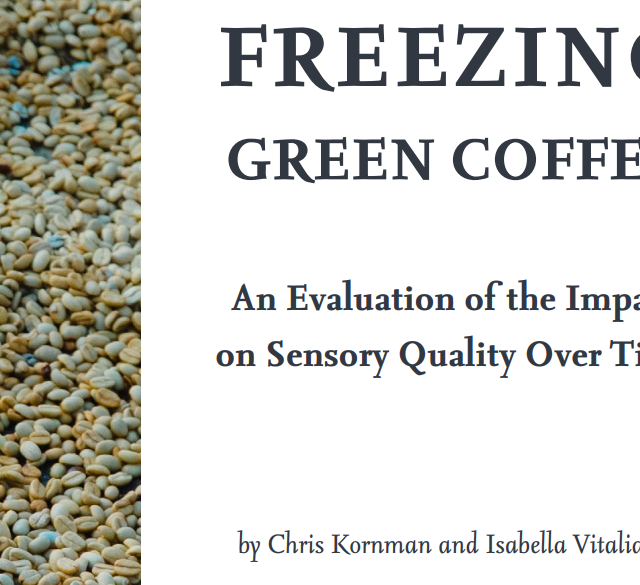Nicaragua and Coffee 2018: Navigating Weather, Civil Strife, Roadblocks, and Low Prices (and still delivering great coffee!)
After suffering in recent years from loss of production due to the effects of La Roya, this was supposed to be a year of recovery for the Nicaragua coffee economy. Renovations to damaged farms and new plantings pointed to a healthy harvest for the 2017/18 crop. Pre-harvest sales were strong and exporters optimistic. However, as always seems to happen to this unlucky country, the perfect storm of uncooperative weather, sociopolitical chaos, and falling prices all hit them at once.
Harvest in Nicaragua coincides with the onset of the dry season in December. This allows for ideal drying conditions in a country where virtually all the coffee is sun dried on cement patios. This year, however, the rains lingered into the harvest, creating a huge challenge to growers and processors for proper drying. Inevitably, problems occurred, fungus was among us, and hard/phenol cups abounded in coffees from even the most meticulous of producers.

Just as the weather finally dried up and processing and shipping could accelerate, the country descended into a state of social chaos as legions of angry citizens groups protested the actions and decisions of the current government who then responded with heavy handed police tactics to control the unrest. Within days of the onset of the rebellion, power supplies were randomly and intermittently cut, and roadblocks were erected throughout the country. This hit coffee exporters especially hard as they are dependent on electrical power to operate the dry mills to sort and process the coffee for export. Once a lot of coffee was finally processed, an exporter then had to navigate an impossible maze of roadblocks, pay off the right people, and hope it could get the container to the port on time to make the vessel shipping date. Rarely did that happen.

Meanwhile, the price of coffee is falling hard and the exporters are trying to manage and finance the larger than normal harvest. A couple of our suppliers reached out to us in April and just flat out told us they weren’t even going to attempt to get the coffee out until things settled down and they could be confident they could get the coffee on a boat. By June, the sociopolitical situation was far from resolved, however, exporters had by then discovered ways to get the coffee to port and shipped out.
So here we are in mid-August, and just now receiving containers of Nicaraguan coffee that we would normally have received in June. While one might expect that what are receiving is damaged and dried up, we are encountering just the opposite, exceptionally well rounded, juicy, and spicy deliveries. I can only surmise that the slow down period in April and May allowed some of these coffees to rest a little longer than usual, and as long as they were well stored and protected in pergamino, they just got better during the wait. In the last 3 weeks we have received our best 3 deliveries of the year – FTO 5 de Junio, Organic Rio Coco, and finally last week, 2 containers of individual Farm organic coffees from the Canales family in Segovia, the best deliveries we have ever received from them. Here they are for ease of reference:
42315 – NICARAGUA ORGANIC GRUPO EDEN TERMOPILAS GRAINPRO
42316 – NICARAGUA ORGANIC GRUPO EDEN LOS MONOS GRAINPRO
42317 – NICARAGUA ORGANIC GRUPO EDEN CASCABELES GRAINPRO
42318 – NICARAGUA ORGANIC GRUPO EDEN PARAISO GRAINPRO
42319 – NICARAGUA ORGANIC GRUPO EDEN CALICHE GRAINPRO
42320 – NICARAGUA ORGANIC GRUPO EDEN BORBOLLOM GRAINPRO
42321 – NICARAGUA ORGANIC GRUPO EDEN DERRUMBE GRAINPRO
While we now have some excellent Nicaraguan coffee to offer, the exporters and cooperatives in Nicaragua are licking their wounds and counting the carnage. The drop in the market and the extra time involved in holding and financing the coffee ate up profits or simply created losses. According to one shipper, were it not for their Fair Trade Organic contracts and a number of higher priced direct trade type coffees it would have been disaster. This is something we should all think about. As prices continue to fall to historic lows, keep in mind that the supply side cannot function at a loss. If you have a coffee you love and don’t want to do without, please consider paying a sustainable price for the coffee to keep the farmers growing it.
As you roast up your new Nicaraguan arrivals, pause to consider everything this coffee and its supplier had to endure this year to get it to you, and then give them a big tip of your hat. Viva Nicaragua!
– John Cossette



